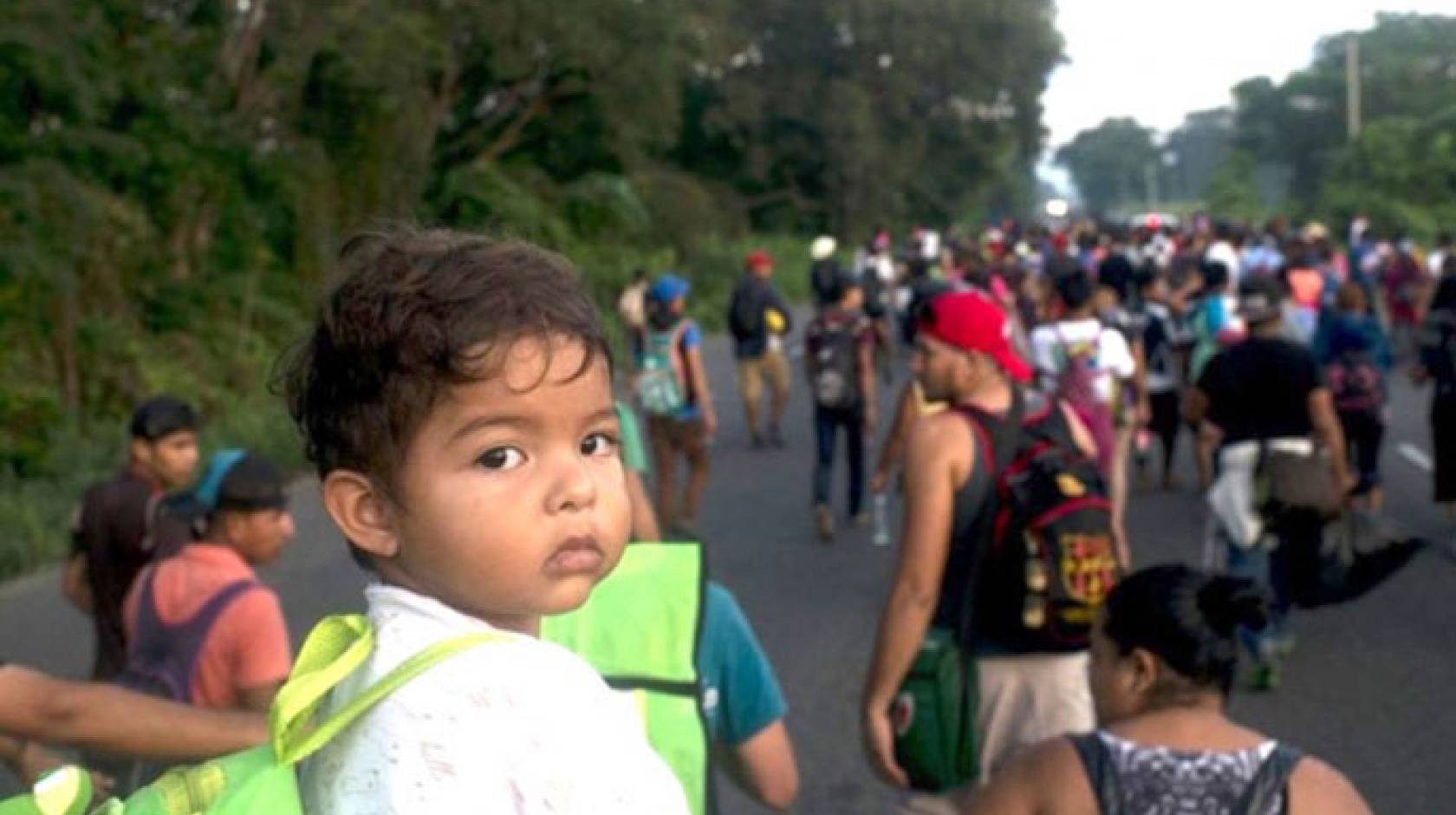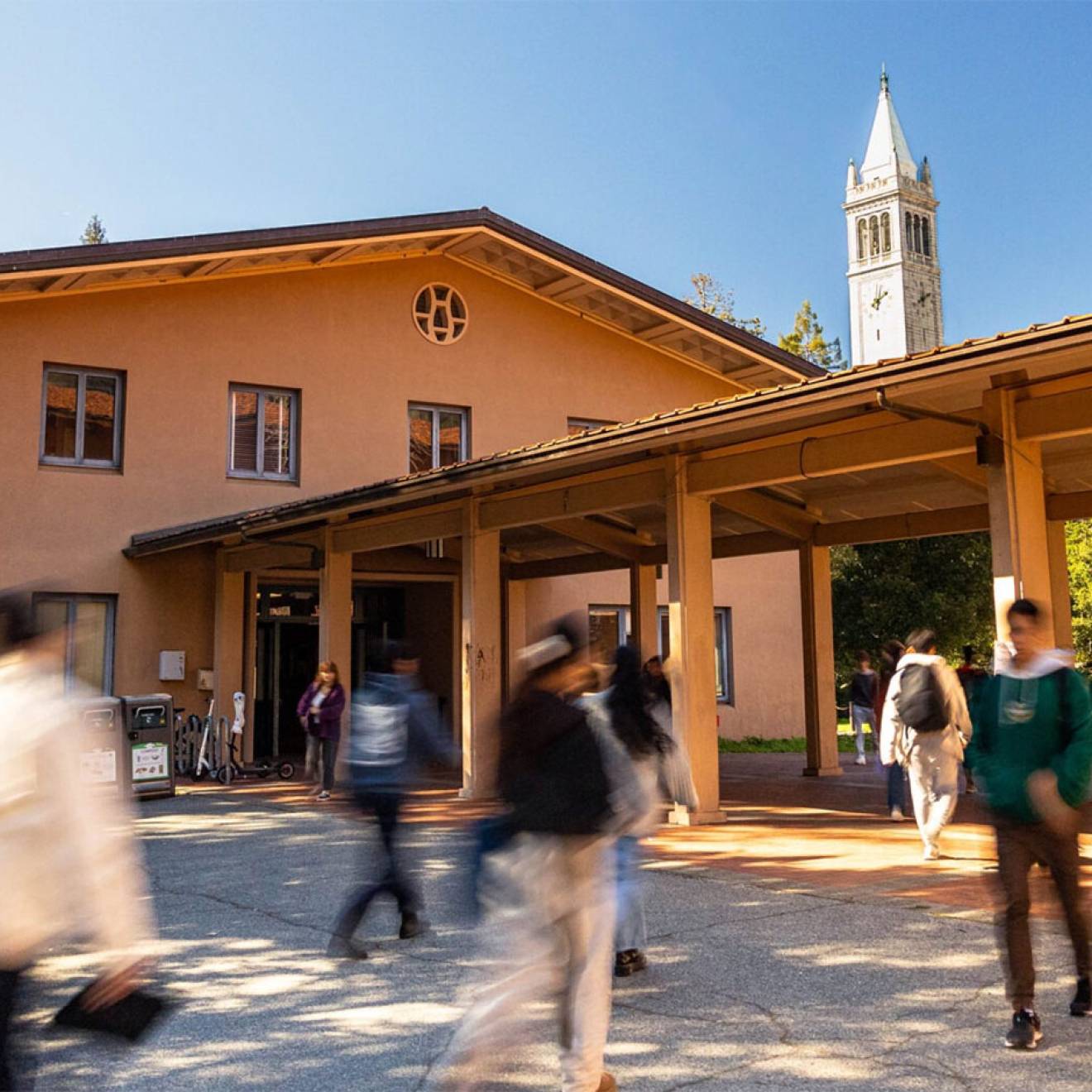Andrea Estrada, UC Santa Barbara

The migrant caravan that traveled from Central America to the United States last month generated headlines — and angry rhetoric — long before it arrived.

Courtesy photo
The situation reached fever pitch the Sunday after Thanksgiving when 500 or so migrants attempted to cross into the U.S. at the San Ysidro Port of Entry in Tijuana, Mexico. U.S. Customs and Border Protection agents responded by launching tear gas over the border.
Many of the migrants are seeking asylum, and almost all have been displaced from their communities — facts that two UC Santa Barbara social scientists argue have been omitted from the ongoing news coverage.
“The mainstream media has totally de-historicized and decontextualized the situation,” said Ralph Armbruster-Sandoval, a professor of Chicana and Chicano Studies. “They talk about gang violence, poverty and general misery, but without any background you’re left to wonder why that is. With no analysis or context, you’re thinking, ‘I’m a little bit sympathetic, but isn’t it their own government’s fault, and why don’t they just vote them out?’”
The problem is much more complicated, the scholars say, and decades in the making.
The U.S. component

Courtesy photo
“The biggest question we need to ask is why this caravan is coming to the United States,” said William Robinson, a professor of sociology with affiliations in the campus’s global studies and Latin American studies departments. The answer, according to Robinson, lies in Central American history and U.S. policies that are responsible for “uprooting people and giving them no choice but to migrate here.”
This particular part of the story, he noted, begins in the 1970s and 1980s when Central America saw a number of radical and revolutionary upheavals aimed at overthrowing military dictatorships and oppressive family regimes that had been backed by the U.S. “That was successful in only one country — Nicaragua,” he said.
However, in the countries from which the majority of the current migrant caravans originate — Honduras, El Salvador and Guatemala — similar movements, those among peasants, workers, students, women and indigenous communities, were not able to achieve the same kind of social justice.
“The role of the U.S. in trying to transform those systems in favor of poor and outcast majorities was to intervene militarily, politically and economically to shore up the elite social orders and to prevent any deeper democratization of these societies,” Robinson said. “Things did settle down a bit and there were negotiated peace agreements, but nothing changed in terms of small elites controlling all the resources and a vast dispossessed majority.”
Globalization, agribusiness and tourism
Fast forward to the 1990s and 2000s and the new era of globalization begins. “And that globalization is going to be promoted by U.S. and Central American elites,” he went on. “By the time you get to the 21st century, you have this massive transnational corporate takeover of the region’s resources.” Hundreds of thousands — maybe millions — of peasants in the countryside are displaced as transnational agribusiness comes in and sets up giant plantations and as upscale tourist complexes are set up as global playgrounds for the world’s “better off,” Robinson explained.
“One of the ways transnational agribusiness has come in and displaced so many is through the palm oil plantations,” he said. “These have swept through Honduras, and that’s displaced all these peasant communities, many of which were cooperatives and individual and small-scale farms. These palm oil plantations have become the big new face of agriculture in Honduras, and they’re run by Dole and all the big international fruit and agriculture corporations. It’s done for biofuel, or simply as industrial oil to export around the world.”
This, Robinson claimed, is the “biggest thing that has displaced hundreds of thousands in the countryside. That’s the big story the media doesn’t tell. There’s not a place for these people in their own countries, and that’s why they are migrating en masse.”
Add to that, the political situation, which enables repressive regimes and dictatorships to remain in power, according to Robinson, and terrorize the people they are meant to lead. “There are death squads that kill a peasant who might be wanting to get his land back,” said Robinson. “His body appears all bloody on the roadside. It’s a warning to others.”
Presidential politics
The 2006 presidential election in Honduras is another example of democracy gone awry. Voters elected José Manuel Zelaya, a mildly reformist candidate who, according to Robinson and Armbruster-Sandoval, sought to improve the plight of the poor, dispossessed majority through a limited number of initiatives. One initiative called for raising the minimum wage for workers in the garment industry, particularly the sweatshops.
“And for that the military intervened and overthrew him in 2009 in a coup d’etat,” said Robinson. When the action concluded, Juan Orlando Hernández had been installed as president. “That coup was backed by the U.S. And ever since, the U.S. has continued to back what was considered an illegitimate government — one that came to power through a military coup that put an end to democracy.”
Hernández was reelected in November 2017 in a contest that, as Armbruster-Sandoval and Robinson noted, most of the international community declared as fraudulent. “And looking back at the Zelaya presidency,” Armbruster-Sandoval said, “would the sky have fallen if someone had been earning $1.50 an hour instead of $1.25? Probably not, and it might have mitigated some of the mess we’re in right now.”
Drug wars
A third element that contributes to Central Americans’ decisions to uproot themselves is the issue of drug trafficking. “Teenagers are forced to go into the drug cartels or they’re killed,” said Robinson. “And the threat extends to their families.”
That the Honduran and Guatemalan military and police are deeply implicated in the drug trafficking business is “public knowledge,” he added. “They’re part of it. That’s well known. So these gangs and cartels organized around drug trafficking in extremely violent ways is integral to the military and police in those countries, and the military and police to this very day continue to receive military training and aid from the U.S.”
A self-induced crisis
Considering the activity at the border, Armbruster-Sandoval described the current situation as a “self-induced crisis.” “You have to challenge the assumption from the get-go that there’s a crisis at the border, and you have to debunk the so-called facts one by one.”
He cited the use of the word “invasion,” which he said suggests some kind of armed force. “And that’s just not the case,” he said. He also noted the general association of migrants and criminality, arguing that studies have demonstrated that from 1980 onward, the cities with the highest immigrant populations have experienced the lowest crime rates.
“And we reap what we’ve sown,” Armbruster-Sandoval said. “Now people come here and we pull the welcome mat out from underneath them. What’s our responsibility to people that we basically forced to flee from their homes? We say, ‘sorry, go back where you came from.’ And if they go back home, frankly, they might die.
“They try to bring about change in their own countries and they’re slapped down,” he continued. “They come to the border and they’re slapped down again. What’s happening at the border is the effect, and if you aren’t looking at the cause, you’re going to be chasing your tail.”

